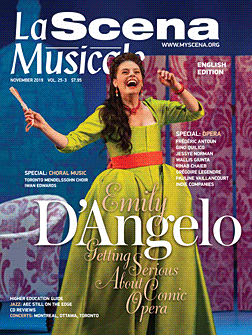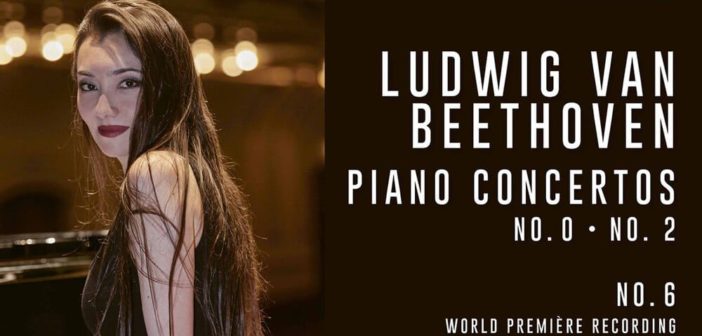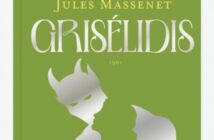
Shostakovich plays Shostakovich
Dmitri Shostakovich, Iosif Volovnik, Daniil Shafran, David Oistrakh, Maxim Shostakovich, Miloš Sádlo, Nina Dorliak, Zara Dolukhanova, Aleksei Maslennikov, Mieczysław Weinberg, Alexander Gauk, Samuil Samosud
Melodiya MELCD1002596
Five CDs. Total time: 5:42:00
5/5
Most records are disposable. A few are memorable, a small handful are treasurable and every now and then now one comes along that is indelible. This box is something else. I think this is the first time I have ever described a record set as indispensable. The five CDs collect all the Russian state recordings of Dmitri Shostakovich playing his own music. The composer was a terrific pianist and the interpretations can be regarded as authoritative – a reference point for all future performances. But the recordings are imbued by place and time – the Soviet Union, 1946 to 1958, with one final session conducted in the composer’s Moscow apartment in 1968, when he was too weak to attend studio sessions for the violin-piano sonata with David Oistrakh.
In the earliest of these recordings, as Stalin is about to launch his second wave of terror, Shostakovich performs 11 songs on Jewish folk poetry with three singers join him around the piano. None of the artists has a window-shattering voice. The composer is seeking intimacy and an air of mourning: six million Jews have just been murdered and you can hear it in the subtexts of this masterpiece. Shostakovich has a knack for capturing Jewish speech rhythms and modes of complaint. The Rivkes and Dovids in his songs are living, breathing Jews. The lead voice belongs to Nina Dorliak, Sviatoslav Richter’s partner; the contralto is Zara Dolukhanova and the tenor, Alexei Maslennikov. Some songs do not sound Jewish. Shostakovich aims to transcend ethnicity in pursuit of humanity. I hardly drew breath through the whole of this cycle. Why do we hear it so rarely?
The two piano concertos are fairly familiar recordings, though new listeners will be stunned by the trumpet playing of Iosif Volovnik, an immortal master of his instrument. The composer, as piano soloist, almost shrinks into background. Oistrakh and the cellist Daniil Shafran join him for chamber music, as do the Beethoven Quartet for the Op. 57 piano quintet. He trusts these men: they won’t betray him, he thinks. There is a four-hand Concertino that he performs with his son, Maxim, as well as the complete 24 Preludes and Fugues.
But the truly shattering experience is saved for the final disc where Shostakovich sits down in 1954 with his friend and neighbour, Mieczyslaw Weinberg, and plays his new symphony, the Tenth, four-handed on his home piano. Mark the date. Stalin has been dead for a year and Weinberg has been sprung from an NKVD cell by the brave intervention of Shostakovich. The symphony draws a line under an era of sheer terror and moves tentatively into light, barely daring to imagine a better future. I listen open-mouthed. Rarely has music so accurately reflected a moment in history, projecting and preserving it for all time. Indispensable? That might be an understatement. Norman Lebrecht (NL).
The Enlightened Trumpet
Concertos by Haydn, Telemann, Mozart and Hummel. Paul Merkelo, trumpet. Oxford Philharmonic Orchestra, Marios Papadopoulos, conductor
Sony Classical 80358118463
Total time: 49:29
4/5
Principal trumpet of the OSM since 1995, Paul Merkelo has always played with the heart of a soloist. He realizes his ambition impressively in a Sony Classical disc comprising the Trumpet Concertos of Haydn, Hummel, Leopold Mozart and Telemann. It says something about the significance of this release that it replaces recordings in the CBS Masterworks catalogue by a certain Wynton Marsalis. Indeed, the 1983 album combining Haydn, Hummel and Leopold Mozart turned Marsalis into the first (and so far, only) artist to win Classical and Jazz Grammy Awards in the same year.
How do they compare? Some will prefer Marsalis’s burnished tone over Merkelo’s brilliance, although the opposite opinion might prevail among those partial to a silvery sound. A good A-B is the athletic rising fanfare that marks the solo entry in Hummel – startling in the new release, convivial in the old. Possibly the impression is influenced by Merkelo’s enterprising decision to perform this concerto in its original key, E, rather than the habitual E Flat, and commission Yamaha to build a custom instrument to facilitate the choice. (It seems that Anton Weidinger, the Viennese virtuoso for whom both Haydn and Hummel wrote concertos, owned keyed trumpets in E and E Flat.) The gallop of the Hummel finale is a delight, as is the cadenza by Timofei Dokshizer. For many listeners the money piece will be Haydn. Merkelo is assured throughout, and his own acrobatic cadenza adds a welcome surprise. In the ceremonial concertos of Telemann and Leopold Mozart, the solo instrument glows gracefully atop the subtle strings of the Oxford Philharmonic under Marios Papadopoulos. The ease of articulation in Leopold Mozart’s finale (one of two movements extracted from a serenade) astounds the listener without in the least compromising the atmosphere of easygoing noblesse. Arthur Kaptainis (AK).
Azrieli Music Prizes Vol. 2
Kelly-Marie Murphy: En el escuro es todo uno. Avner Dorman: Nigunim (Violin Concerto No. 2). Srul Irving Glick: Seven Tableaux from the Song of Songs. Couloir (cello and harp); Lara St. John, violin; Sharon Azrieli, soprano. Orchestre classique de Montréal, Boris Brott, conductor
Analekta AN 2 9262
Total time: 66:00.
3/5
The Azrieli Music Prizes for New Jewish Music are a great addition to the cultural infrastructure of Canada and the world. Most years. The 2018 winner of the commission prize, Kelly-Marie Murphy, starts En el escuro es todo uno by toggling atmospheric wisps reminiscent of Mahler’s First Symphony with interjections of rougher barks and growls. In the second movement the composer settles on a bluntly rhythmic rendering of a Ladino folk song that scans as a noisy approximation of the score to Casablanca. The cello-harp duo Couloir manages some soulful turns in the cadenza but the finale (which ends abruptly) offers more hard-to-listen-to pastiche. Avnar Dorman’s Nigunim explores the similarities of indigenous Jewish styles from various parts of the world to create a miscellany that does not hold together as a violin concerto despite the estimable solo work of Lara St. John. Seven Tableaux from the Song of Songs by the late Srul Irving Glick, as arranged for soprano, piano and orchestra, comes as a relief for being in a straightforward Sondheim style. Sharon Azrieli pours her heart into this, even if her voice is not always suited to the Broadway idiom. Expert backup by the Orchestre classique de Montréal under Boris Brott and excellent engineering by Analekta. Looking forward to next year. AK
Beethoven: Piano Concertos 0-5 (including Piano Concerto in E flat major, WoO 4)
Deutsches Symphonie-Orchester Berlin. Mari Kodama, piano. Kent Nagano, conductor
Berlin Classics 0301304BC
2/5
Beethoven: Piano Concertos 0, 2, 6 (including Piano Concerto in E flat major, WoO 4 and a fragment completed by Nicholas Cook and Hermann Dechant)
Sophie Mayuko Vetter (piano/fortepiano). Hamburg SO, Peter Ruzicka
Total time: 68:00
3/5
Two recordings arrive, both claiming to be Beethoven world premieres. At issue is a piano concerto the great man wrote in 1784 at the age of 13 or 14 and, after copious revisions, apparently forgot about. The autograph manuscript sits in the Berlin State Library and two pianists have had recourse to it, with a quick trip to the photocopier. First things first: is the concerto a significant work? Not in the sense that it reveals much we did not already know about Beethoven, music or humanity. The opening theme does not grip the ear and the development is fairly conventional. If someone marketed this as a discovered work by Clementi or Dussek, you would not doubt their word. There are phrases in the second movement that give an intimation of what lies ahead but the emotional barometer is turned very low and there is little to command the listener’s attention over the course of 23 minutes.
So which of the performances is to be preferred? Mari Kodama gives a perfectly agreeable account of the work with her husband, Kent Nagano, conducting the DSO-Berlin as part of a set of six Beethoven piano concertos. Sophie-Mayuko Vetter, playing a Beethoven-era Broadwood fortepiano, sounds marginally more convincing, accompanied by the Hamburg Symphony Orchestra, conductor Peter Ruzicka. Her album offers, in addition to the well-known B-Flat Major Concerto Op. 19, an unheard fragment of yet another discarded piano concerto. Undated, this one contains hints of an opening phrase from the future “Emperor Concerto.” In a year full of Beethoven, these workshop scrapings exert a haunting fascination. Vetter’s the one to try. NL
Mozart: Piano Sonatas K. 310, 331, 576
Yaron Ross, piano
YRCM 63569
Total time: 62:36
4/5
This concluding installment in a cycle of Mozart Piano Sonatas by the Concordia professor Yaron Ross offers distinctive phrasing from the start, with a daring hesitation in the opening bar of the Sonata in A Minor K. 310. Accompanying triads define the pulse with crisp articulation rather than relentless pounding. First-movement variations are subtly defined in the Sonata in A Major K. 331. A full-hearted and pastoral Menuetto follows, then a surprisingly thoughtful Rondo alla Turca. The jubilant fanfares of the first movement Sonata in D Major K. 576 lead to a deeply felt Adagio and plenty of fun in the finale. Everywhere rubato is applied with inherent musicality and a refreshing absence of pedantry. This disc works as both a pick-me-up and a settle-me-down, which is to say it is a faithful reflection of the composer. AK
Fanny and Felix Mendelssohn: Works for Cello and Piano
Johannes Moser, cello. Alasdair Beatson, piano
Pentatone PTC 5186781
Total time: 75:80
4/5
The near-symbiotic relationship between Mendelssohn and his older sister, examined in my forthcoming book Genius and Anxiety, was so central to both musicians’ lives that Felix was felled by a stroke on hearing of Fanny’s death and died before the year was out. Fanny, the first to evince musical talent, was silenced by their father as she neared puberty in order not to deflect attention from her genius kid brother. In her 30s she found a publisher and began – to Felix’s chagrin – to produce chamber music. His anger abated on finding that the music was of high quality. At their last meeting, the pair sat at the piano and gleefully played each other’s latest works.
It is almost impossible on record to hear them together, which is why the present release is such a gift. Between Felix’s two sonatas for cello and piano, we hear a delicate Fantasia in G minor by Fanny, followed by a delicious, meditative Capriccio in A-flat. Beside Fanny’s secure inner voice, Felix sounds hard-sell and bombastic. Where he is writing for instant applause, she has a more distant audience in mind. The performers, Johannes Moser and Alisdair Beatson, capture this contrast to perfection. It’s my favourite Mendelssohn listening of the year. NL
Into The Stone: Music for Solo Violin by Canadian Women
Gillian Smith, violin
Leaf Music, LM228
Leaf Music has just released the first solo album of Ontario violinist Gillian Smith, an album that is quite timely since it brings together five contemporary works by five Canadian composers: Kati Agócs, Alice Ping Yee Ho, Veronika Krausas, Chantale Laplante and Ana Sokolović. This repertoire requires great virtuosity, if only in the adaptation to different musical territories. In this exercise, Gillian Smith demonstrates a great skill and mastery that allows the listener to identify the uniqueness of each universe. Ho’s virtuoso Caprice opens with a catchy rhythm, a veritable technical cascade opening into a phantom glade, played pianissimo in the high passages. Sokolović’s Five Dances have the appearance of hammered rhythmic studies, using a wide range of modes of play to give the instrument a percussive role. A long musical track strewn with double strings, Krausas’ Inside the Stone unfolds a colorful speech that does not run out of steam, with skilfully written and judiciously interpreted lines. Versprechen d’Agócs is a kind of serial variation of Bach’s chorale, which reappears at the end of the piece as an island of consonance at the heart of the album, which ends with a slow and very airy piece of Quebec’s Chantal Laplante. Feminine mosaic universe and personalities, this album reveals that of the violinist Gillian Smith, who magnificently appropriates Canadian repertoire.














